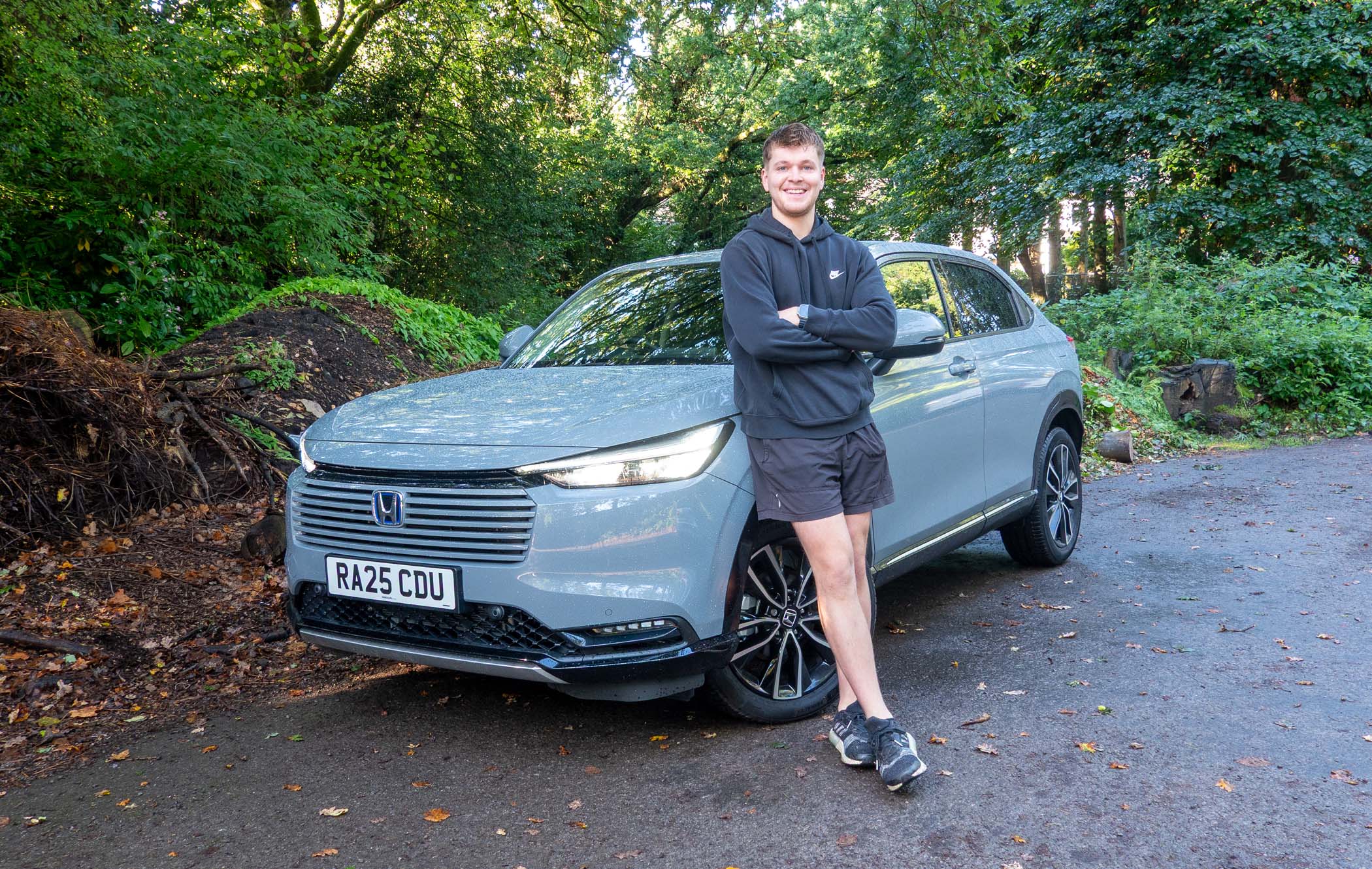Hyundai Kona review (2017-2023)
The Hyundai Kona is a small, quirky crossover car that’s staking its place in the increasingly crowded compact SUV market. With a high driving position, an interesting range of engines (plus electric motors) and plenty of standard tech, it’s well worth checking out. Dive into our road-tested Hyundai Kona review below.
Pros
- Quiet to drive
- Affordable
- Decent interior
Cons
- Electric version may suit more people
- Newer model is more practical
Interior
Our rating: 6/10
Driving position
Thanks to a wide range of adjustability for the driver’s seat and steering wheel, it’s easy to get comfortable in the Kona.
The pedals line up nicely with the seat and there’s adjustable lumbar support on all but SE Connect versions.
Ultimate trim cars get electric seat adjustment as well.
Front and side visibility is good thanks to the Kona’s thin pillars and tall windows, although the view back is slightly obstructed by the car’s small rear screen.
Tech and features
Rear parking sensors and a reversing camera come as standard, so squeezing into cramped parking spaces should be a breeze.
The Kona is well-equipped for a car in this class. Entry-level versions come with Hyundai’s eight-inch display infotainment system featuring Android Auto and Apple CarPlay connectivity, air-con, cruise control and a rear-view camera.
N Line trim includes rear parking sensors, climate control, ambient lighting, an upgraded sound system and a larger touchscreen with sat-nav and the option to connect with Hyundai's Bluelink smartphone app.
The Premium and Ultimate specs add heated front seats, a sunroof and an additional safety kit, among a host of other high-tech goodies.
The interior of the Kona lacks the slightly oddball touches of the exterior, but it’s decently put together, with sturdy plastics and pleasingly soft-touch materials spread around the cabin.
It’s a nice place to be, beating several of its rivals for an overall quality feel.
Performance
Our rating: 6/10
Handling and ride comfort
Due to its elevated ride height, the Kona’s driving seat makes you feel like you’re piloting something a little taller than a normal hatchback.
Luckily, this doesn’t affect the Kona’s handling, which only suffers from minimal body lean in the corners.
The stiff suspension ensures it remains relatively composed on twisty B-roads, although the steering lacks feel.
Great for families who just want to get to their destination, less for driving enthusiasts who want to feel the journey.
The Kona’s ride is decent, although it lags a little behind its closest rivals when it comes to comfort.
While it will gladly tackle fast A-roads and motorways with vigour, the Kona is most suited to town driving, where its light steering and compact size make it perfect for negotiating narrow city streets and tight parking spaces.
Engines and power
The entry-level 1.0-litre petrol isn’t powerful but it has enough clout to keep up with motorway traffic and negotiate overtaking manoeuvres on A and B-roads.
The 1.6-litre petrol hybrid model is quicker, while the latest electric versions are lively performers.
Practicality
Our rating: 5/10
The Kona’s interior space is decent, if not class-leading.
Front head and legroom is ample, while the rear compartment may be a bit of a squeeze for adults over six feet tall.
Storage solutions
When it comes to interior storage space you get the requisite pair of cupholders up front, a large cubby underneath the front-centre armrest and some decent-sized door pockets.
N Line, Premium and Ultimate models also feature a wireless phone charging pad behind the gear lever.
Boot space
Boot space isn’t quite on a par with rivals, although its wide opening allows you to get larger items in and out with the minimum of fuss.
Additionally, the Kona’s standard issue 60/40 split rear seats, which fold almost flat into the floor, give you the option of carrying larger loads should the need arise.
Running costs
Our rating: 7/10
Fuel economy
Fuel economy for the Kona’s entry-level 1.0-litre petrol engine – which will return a reasonable 47.1 mpg – is roughly in line with the competition, while the 1.6-litre Hybrid model is considerably more frugal, delivering 56.5mpg with an equally impressive CO2 figure.
The latest electric versions of the Kona – which are available with either a 39kWh or 64kWh battery – have respective ranges of 200 and 300 miles from a full charge.
Reliability
Hyundai has developed a good reputation for producing well-built, reliable cars, so we don’t foresee any major problems with Kona ownership.
The verdict
Interior
6/10
Performance
6/10
Practicality
5/10
Running costs
7/10
There’s a lot going for the Hyundai Kona.
There are its unconventional looks for a start.
But it’s the Kona’s generous levels of standard equipment, high-tech infotainment system and trusted reliability that really make it a worthy contender in its class.


